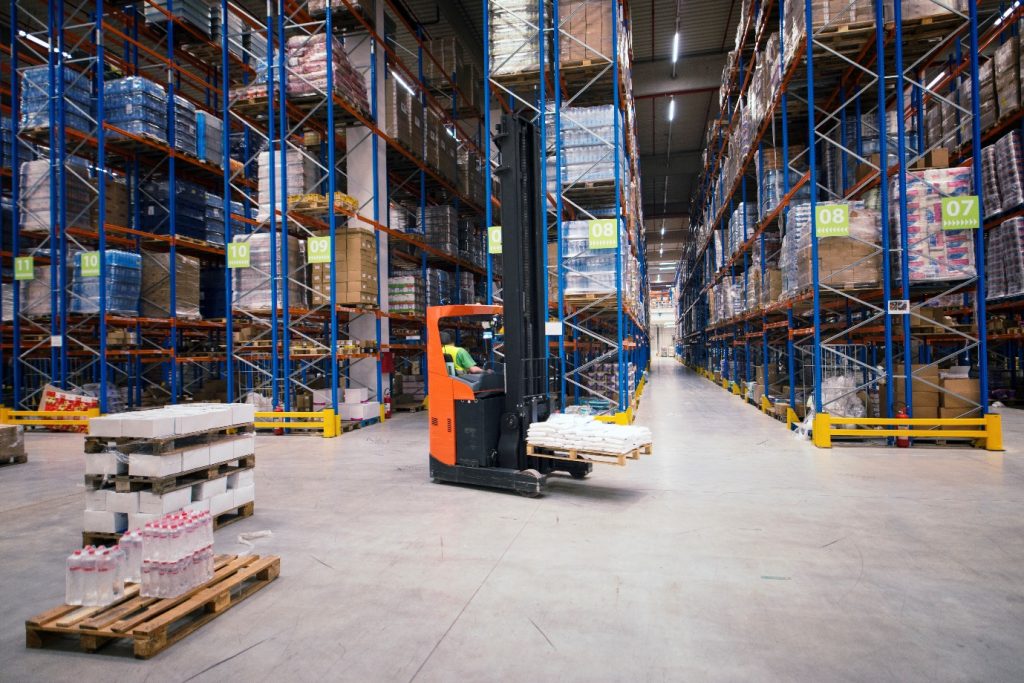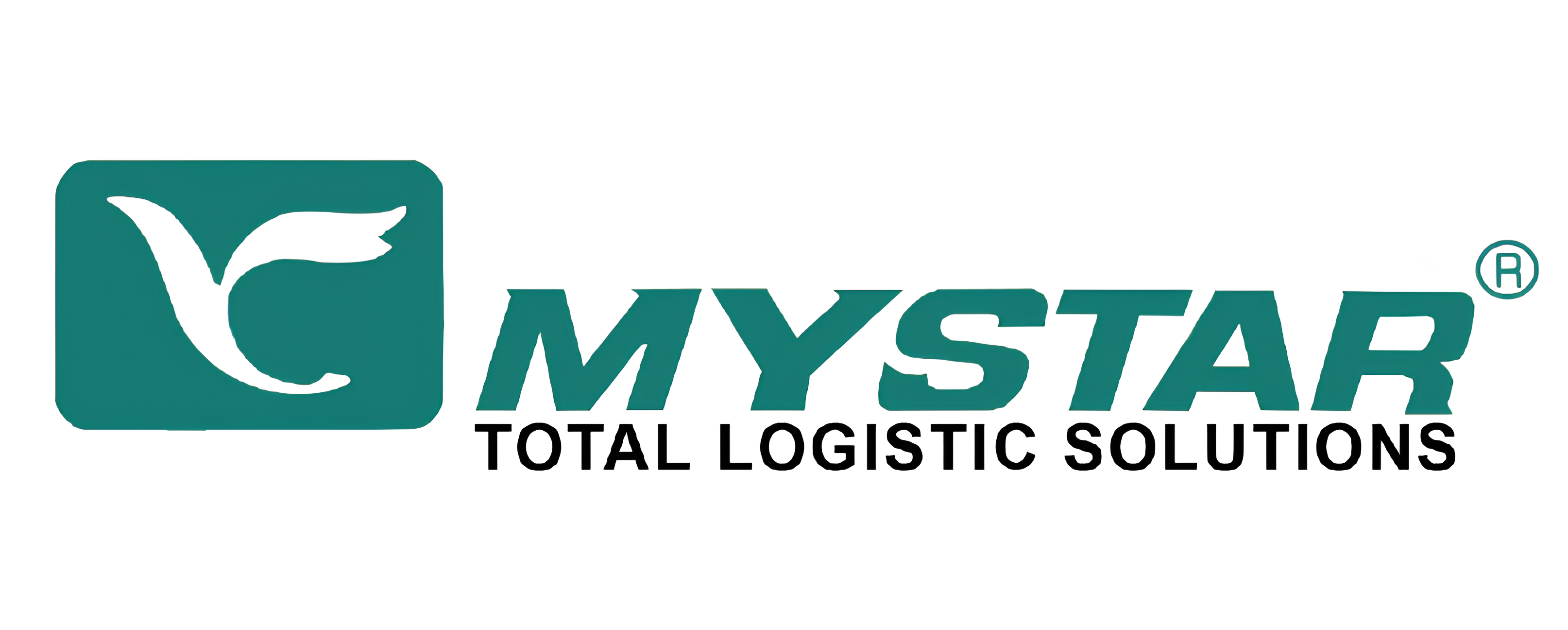A well-designed warehouse racking system is the backbone of an organised and efficient storage facility, enabling you to make the most of your available space while ensuring seamless inventory management.
Here, we will explore the various types of racking systems available, their area of application, as well as their benefits. We will also discuss key considerations and steps to consider when selecting a racking system, as well as maintenance and safety tips for warehouse racking systems.
Various Selections of Warehouse Racking Systems

Types of Warehouse Racking Systems for Palletised Goods
Warehouse racking systems for palletised goods come in various types to cater to diverse storage needs. Below are some common types of warehouse racking systems that are used to store palletised goods:
Selective Racking
A selective pallet racking system is the most used type of warehouse racking system, offering excellent flexibility and accessibility, as well as allowing direct access to every pallet stored.
However, this convenience comes at the cost of reduced storage density. Despite the lower density, selective racking remains a popular choice due to its versatility in accommodating a wide range of products and inventory rotation requirements.
Double Deep Racking
Double-deep racking is a variation of selective racking where pallets are stored two deep, creating higher storage density. It operates on the same principle as selective racking, providing direct access to each pallet.
Nonetheless, the double-deep configuration requires a specialised forklift with extended reach to access the pallets stored behind the front row. Double-deep racking is an ideal solution for warehouses that require easy accessibility and high storage.
Drive-In/Drive-Through Racking
Drive-in and drive-through racking systems are designed for high-density storage of large quantities of homogeneous products.
In drive-in racking, goods are loaded and retrieved from a single side, following the Last-In, First-Out (LIFO) principle. Drive-in racking eliminates the need for multiple access aisles, maximising storage capacity by utilising the depth of each storage bay.
Meanwhile, drive-through racking allows entry and exit from both sides of the rack, following the First-In, First-Out (FIFO) principle. This configuration allows for easier access to individual pallets and ensures that older inventory is retrieved first.
Types of Warehouse Racking Systems for Medium-Sized and Lightweight Goods
Next, these racking systems are designed to accommodate the storage of medium-sized and lightweight items, such as carton boxes or plastic bins. These solutions have found extensive use in record management companies and centralised distribution centres.
A few examples of such racking systems are:
Multi-Tier Racking
Multi-tier racking enables multiple levels of storage while incorporating walkways directly into the racking structure for manual picking. These walkways allow personnel to manually pick items from the storage levels without requiring additional aisles or separate picking areas.
By integrating walkways within the racking, it reduces the travel distance for order pickers, improving productivity and reducing picking times. As such, this design maximises storage capacity while providing convenient access for picking and replenishment operations.
Boltless Shelving System
Boltless shelving provides a simple and efficient way for organising and storing various goods. The “boltless” aspect refers to the shelving’s construction, which involves a series of vertical posts and horizontal beams that can be easily connected and adjusted without using traditional fasteners.
This practical solution is tremendously beneficial for optimising space and ensuring efficient organisation. In addition, boltless shelving’s design minimises wasted space, as the absence of cross-bracing or diagonal supports allows for full access to the storage area from all sides.
Carton Flow Racking
Carton flow racking is a storage system that employs gravity and inclined rollers or tracks to facilitate the movement of items within the racking structure. When new cartons are loaded onto the higher end of the shelf, they gently roll down to the lower end as items are picked from the front.
This racking system ensures that older inventory gets used before newer stock, which is crucial for products with expiration dates or time-sensitive materials. As such, it is widely used in industries requiring efficient, organised, and high-throughput storage and order picking.
Types of Warehouse Racking Systems for Specific Goods
Moreover, there exist specialised racking systems that provide excellent storage, easy access, and effective organisation. These warehouse racking systems cater to the needs of industries ranging from retail and manufacturing to logistics, for instance:
Cantilever Racking
Cantilever racking is a specialised storage system that accommodates long, bulky, or irregularly shaped items such as lumber, piping, or fabric rolls. It offers a practical storage solution for items that cannot be easily stored on traditional pallet racking systems.
The distinguishing feature of cantilever racking is its arms, which extend horizontally from vertical columns to support the stored items. The design allows for typical adjustments and customisations of these arms to match the dimensions of the stored materials.
Benefits of a Well-Designed Warehouse Racking System
Increase Storage Space and Improve Operational Efficiency
An optimised warehouse racking system maximises the use of available space, allowing you to store more goods in a systematic and organised manner.
You can increase storage capacity and efficiently manage inventory by utilising vertical height and implementing space-saving configurations.
As a result, this improves operational efficiency by reducing clutter, minimising searching time, and facilitating faster order fulfilment.
Facilitate Better Inventory Management and Streamline Logistics
A well-designed warehouse racking system promotes effective inventory management, enabling clear visibility and easy tracking of goods.
With properly labelled racks and organised storage, inventory accuracy improves, reducing errors, stockouts, and the time spent searching for items.
Streamlined logistics result in faster order fulfilment, improved customer satisfaction, and efficient supply chain operations.
Enhance Safety by Reducing Accidents and Material Damage
A racking system must incorporate safety features such as beam supports, rack protectors, and load ratings to prevent accidents and damage to goods.
You can minimise the risk of accidents, collapses, and material damage by ensuring proper weight distribution, load capacity adherence, and secure storage.
This, in return, contributes to a safer working environment for employees and reduces the potential for product loss.
Read More: Pallet Racking Certification for Rack Safety in Malaysia
Cost-Effectiveness in the Long Run
With increased storage capacity and operational efficiency, investing in an efficient warehouse racking system can yield cost savings in the long run.
By optimising storage space, businesses can avoid the need for additional warehouse space or facility expansion.
The efficient organisation and accessibility of inventory also reduce handling time and improve order fulfilment accuracy, minimising costly errors.
Key Considerations When Implementing a Warehouse Racking System
Warehouse Space and Storage Requirements
Evaluate your warehouse space, taking into account the dimensions, layout, and any constraints or obstacles.
Next, determine the storage requirements in terms of the types of products, inventory volume, and pallet sizes.
This assessment will help determine the suitable type and size of the racking system that best utilises the available space.
Future Growth and Scalability
When selecting a racking system, it’s compulsory to anticipate future growth and scalability requirements.
Consider whether the chosen system is expandable or reconfigurable to accommodate increased storage needs as your business expands.
Choosing a flexible and modular racking system allows for adjustments and expansions without significant disruption.
Proper Layout Design
Design the layout of your racking system to optimise accessibility, efficient flow of goods, and space utilisation.
Assess various factors, such as the placement of aisles, the arrangement of racks for smooth material handling, and the creation of logical picking paths.
A proper layout design ensures easy access to products, minimises travel distances, and maximises the use of available space.
Budget Considerations
Understand the budgetary constraints associated with implementing a warehouse racking system.
Evaluate ongoing maintenance costs, such as repairs, inspections, and potential replacement parts.
Lastly, review the potential return on investment in terms of improved efficiency, productivity gains, cost savings, and more.
Read More: Warehouse Rack Maintenance in Malaysia: What You Need to Know
Steps to Choose the Right Warehouse Racking System
Review Your Storage Needs
Assess your storage needs in terms of volume, weight, size, and type of goods. Then, determine the average and maximum inventory levels, the dimensions and weight of the products, and any special requirements for handling or storing certain items.
Consult Industry Experts
Seek professional advice, especially from a trusted racking system supplier who has experience in designing and implementing warehouse racking systems. Share your specific requirements, space constraints, and operational considerations.
Explore Future Business Needs
Review your growth plans, product diversification, or changes in order volume. Select a racking system that enables scalability, flexibility, and easy reconfiguration to meet your future requirements without significant disruptions or costly modifications.
Read More: Warehouse Racking Safety Malaysia: Proper Usage of Racks
Maintenance and Safety Tips for a Warehouse Racking System
Regular Inspections
Conduct regular inspections of your warehouse racking system to detect any signs of damage, wear, or potential issues. Inspect for bent or damaged components, loose connections, missing bolts or clips, and signs of rust or corrosion.
Proper Load Distribution
Maintain proper load distribution on the racking system to ensure stability and prevent damage or accidents. Follow the weight capacity guidelines provided by the manufacturer and avoid overloading individual racks or specific sections.
Safe Usage Practices
Train your staff on safe and efficient racking usage practices. Emphasise the importance of properly loading and unloading items, using appropriate lifting techniques, and avoiding excessive force or impact when handling pallets.
Delivering Reliable Warehouse Racking Systems
Dedicated to providing robust storage solutions, Prestar Storage offers a wide range of warehouse racking systems, as well as live and automation solutions to cater to your specific storage needs.
Not only that, but we also provide exceptional equipment to streamline warehouse and material handling processes.







